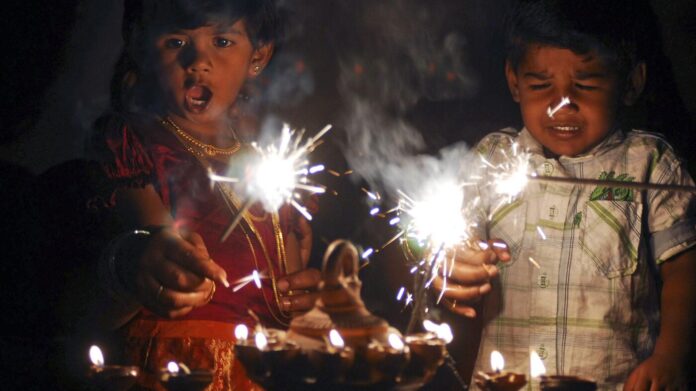Burning crackers during celebrations, such as Diwali, may seem joyous, but it has harmful consequences—particularly for children and vulnerable groups. Here’s a deeper look at the impact:
1. Impact on Children’s Health
- Respiratory Issues: Crackers release toxic gases such as carbon monoxide, sulfur dioxide, and nitrogen oxides. This can trigger asthma attacks and breathing problems, especially in children with pre-existing respiratory conditions.
- Allergies and Skin Irritations: The chemical residues from fireworks can cause skin rashes, eye irritation, and allergic reactions in sensitive children.
- Noise Pollution: Loud bursts can lead to hearing impairments in infants and disturb sleep, contributing to stress and mental health concerns for kids.
2. Psychological Impact
- Trauma and Anxiety: Children, particularly babies and toddlers, may experience anxiety or fear from the loud, sudden sounds of crackers. This can lead to disturbed sleep patterns and heightened stress levels.
- Cognitive Development: Prolonged exposure to polluted air can affect a child’s brain development. Studies link air pollution with reduced cognitive function, memory issues, and lower academic performance in young children.
3. Environmental Consequences
- Air Quality Deterioration: Crackers release fine particulate matter (PM2.5 and PM10), which can linger in the air for days. Children, who breathe faster than adults, inhale more polluted air relative to their body weight.
- Green Spaces at Risk: Chemicals from crackers settle on soil and plants, affecting natural ecosystems that children interact with, such as playgrounds, gardens, and parks.
4. Worsening Inequality for Underprivileged Children
- Health Costs and Treatment Access: Children from poorer families are disproportionately affected since they often lack access to proper healthcare. They also tend to live in more polluted areas, with greater exposure to the post-festival smog.
- Child Labor in Fireworks Industry: Some children are involved in the dangerous manufacturing of crackers, putting their health and futures at stake. Supporting the use of crackers indirectly fuels this exploitation.
5. Alternatives to Firecrackers
- Eco-Friendly Celebrations: Opt for alternatives such as LED lights, soundless laser shows, or community gatherings that promote music, art, or storytelling.
- Green Crackers: If you must celebrate with fireworks, opt for government-approved green crackers, which emit fewer pollutants.
- Spreading Awareness: Involve children in creating posters or campaigns about environmental conservation and safe celebrations to instill a sense of responsibility from a young age.
By reducing or avoiding firecrackers, we not only protect children but also contribute to a cleaner environment, paving the way for healthier celebrations.



